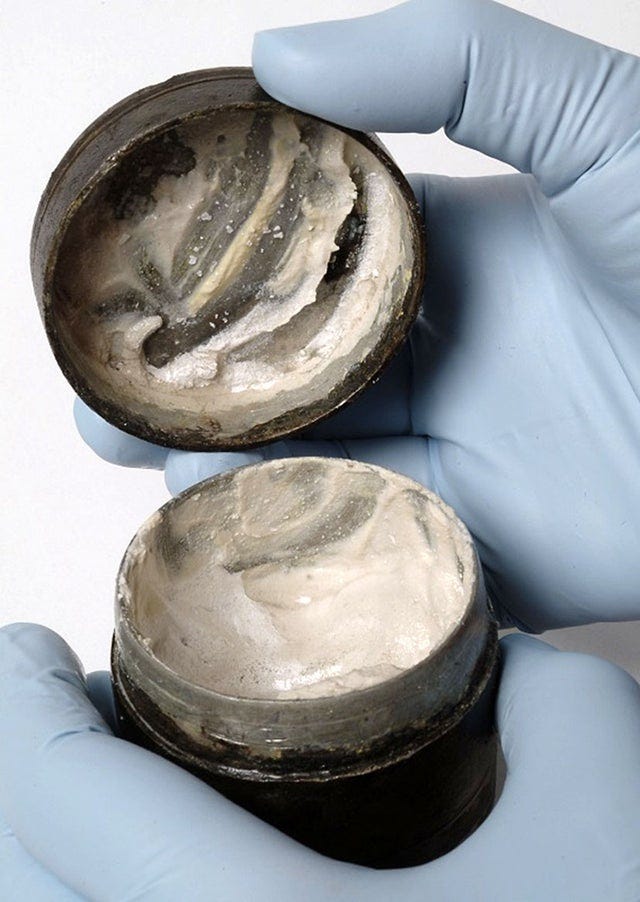Discovery of the World's Oldest Known Roman Cosmetic Face Cream from the 2nd Century AD
The content describes the remarkable discovery of a 2,000-year-old Roman face cream dating back to the 2nd century AD. The cream was found sealed in a cylindrical container, approximately 6 cm by 5 cm, in a temple complex dedicated to the god Mars in Southwark, south London.
Upon opening the container, researchers found a white cream with a pungent smell, still bearing the finger marks of its last user. This personal connection to the ancient world offers a unique glimpse into the daily rituals and beauty practices of Roman society. The presence of such a cosmetic item in a temple dedicated to the god of war suggests that personal grooming and appearance were significant even in religious and possibly martial contexts.
The discovery of this ancient face cream highlights the advanced cosmetic practices of the Romans and provides valuable insights into their daily lives and cultural priorities. Analysis of the cream's composition reveals a sophisticated blend of ingredients, showcasing the Romans' knowledge of skincare and their desire for beauty and self-care.
This ancient Roman face cream stands as a testament to the enduring human fascination with beauty and the lengths to which people have gone to preserve and enhance their appearance throughout history.
요약 맞춤 설정
AI로 다시 쓰기
인용 생성
소스 번역
다른 언어로
마인드맵 생성
소스 콘텐츠 기반
소스 방문
medium.com
2000 year-old Roman face cream/lotion.
핵심 통찰 요약
by Hijab Randha... 게시일 medium.com 10-01-2024
https://medium.com/@hijabrandhawa9/2000-year-old-roman-face-cream-lotion-bc034d87c9be
더 깊은 질문
